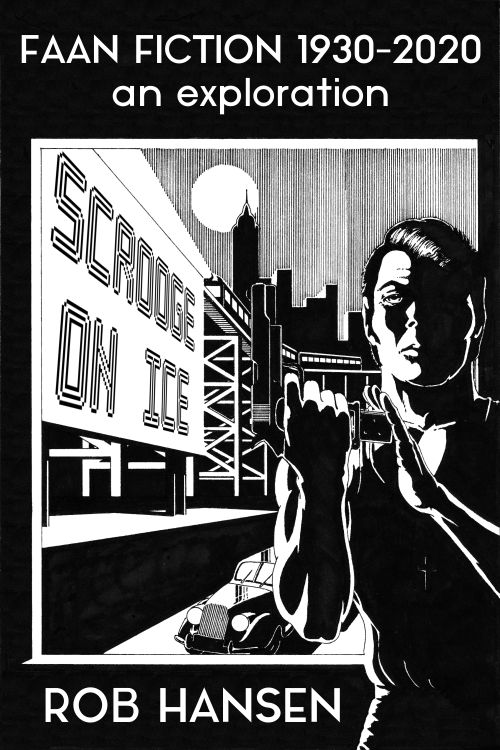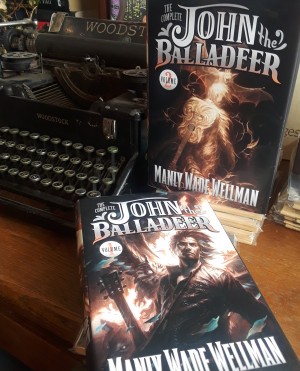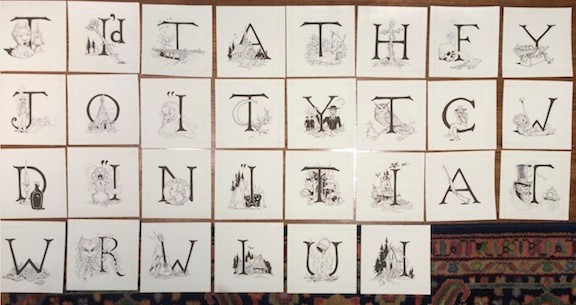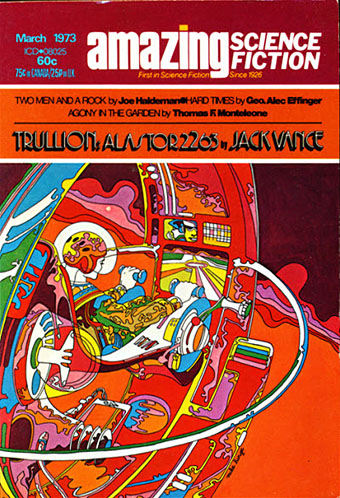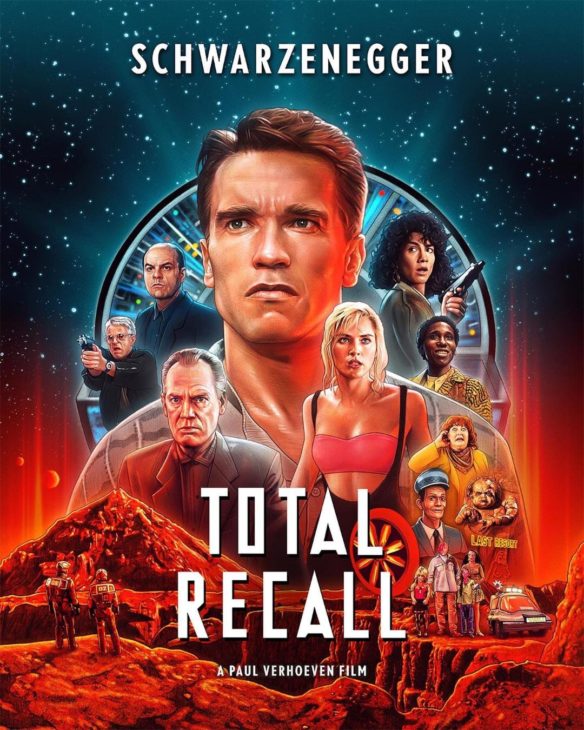(1) THEY “FORGOT”. On Reddit’s /r/printSF group, a poster asks what had happened to Mark Hodder’s A Dark and Subtle Light, which had been scheduled to be published back in October 2024.
Another poster replied with text from the book’s Goodreads page:
“UPDATE: I contacted Mark Hodder on BlueSky and he was kind enough to give me the low-down. In summary: -“The publisher purchased it as “work for hire” … meaning they owned the character and concept of the brief. The idea was that it would be the first of a series with other authors working on subsequent novels featuring the same main character” -“They set an Oct ’24 date for publication. However, the editor who had suggested the idea left the company. They decided to put the project on hold, forgot to tell me & forgot to remove the scheduled pub. date from Amazon.”
They . . . “forgot” to tell the author they cancelled publication of his book. That is brutal.
But, there is still a possibility that we’ll see this book in some form in the future, so I’m leaving it on my TBR list. “
And this was followed up by a reply from the author themselves:
I’m afraid Rebellion (I’m now naming and shaming) have not only taken the novel off their schedule but they are also refusing to give it (or even sell it) back to me. Their stance is that I got paid so I don’t really have anything to complain about. A fucking atrocious attitude. Not only does it ignore the fact that a) the novel would earn me royalties, and b) whenever I have a new novel published there’s a spike in sales for my other work and my audience grows, but it also presumes that I write for money rather than to entertain. No author writes for money. Publishers pay a pittance.
To put it into perspective, Rebellion paid me £7000 for the novel with royalties set to kick in (after that £7000 had earned out) at a rate of 7% of the recommended retail price up to 14,999 copies; rising to 8% on 15,000 to 29,000 copies; rising to 10% on 30,000 copies onwards.
I’ll get none of that. The novel took a year to write and all I have to show for it is the initial £7000. The MINIMUM annual wage in the UK is £21000.
So, yes, financially, Rebellion has fucked me over. But the real issue is that I consider it one of the best novels I have written and I am royally PISSED OFF that no one will get to read it.
(2) CREATING BLAKE’S 7. “’When Star Wars came out, one of our directors was close to tears’: how we made Blake’s 7” — a “How We Made” oral history at the Guardian.
Michael E Briant, director, series one
I got the impression Blake’s 7 was just going to be “space opera” and, having worked as a director on Doctor Who, I wanted to move on and do other things, but the script for the first episode won me over. It was 1977, before the mass surveillance we have today, so the idea of everyone being watched by cameras, as that opening episode had it, seemed striking. It had shades of Nineteen Eighty-Four and felt very adult and relevant.
The series had been pitched by Terry Nation, who created Doctor Who’s Daleks. He saw it as The Dirty Dozen in Space, but that idea disappeared early on. It ended up having more in common with Robin Hood, following Blake and his rebels in their struggle against the totalitarian Federation. The BBC had commissioned Blake’s 7 as a replacement for its police series Softly, Softly: Task Force and we inherited its budget. The largest expenditure on Softly had been one character’s gabardine raincoat. Blake’s 7 was far more demanding, with futuristic costumes, props and locations. Star Wars had come out in the UK just before our first episode aired. One of the show’s other directors, Pennant Roberts, went to see it. The next morning, I found him in his office – close to tears.
The design of the rebels’ Liberator spaceship was by Roger Murray-Leach. It was marvellous, but the interior wasn’t quite what I’d envisaged. I thought a highly advanced vessel should be operated via thought alone, whereas the set we ended up with had joysticks and controls. The ship’s computer, Zen, was closer to what I’d imagined. Peter Tuddenham did Zen’s voice, hidden away in the corner with headphones and a mic. When a second computer called Orac joined the crew, Peter did it too, switching between the two voices.
Whenever we had a problem making something work electronically, this guy called Mitch Mitchell would solve it. One of his jobs was doing the dissolving body special effect whenever crew members teleported down to alien planets. He’d be sitting in the corner with an electronic pen, drawing the white outlines that appeared before they materialised….
I don’t think the show would have been the success it was without Gareth Thomas as Roj Blake. He was a truthful, clever actor and his performance lifted everyone. Sally Knyvette also brought a sense of sobriety and realism to Jenna, one of Blake’s followers, while Paul Darrow and Michael Keating brought more and more depth to the characters of Avon and Vila respectively. Watching it again now, I’m surprised how good some of it is….
(3) REMEMBERING HOWARD ANDREW JONES. Bob Byrne pays tribute in “An Important Life – Howard Andrew Jones (1968 – 2025)” at Black Gate. He begins by quoting his Facebook post.
…My buddy Howard Andrew Jones has passed away from brain cancer. You’re going to see a LOT of people singing his praises in the coming weeks. All of it deserved. If I can stop crying long enough, my Monday morning post will be on Howard.
But you’re gonna see a common thread in the talk about Howard. The impact he had on other people’s lives. Especially in encouraging and helping writers – mostly in the sword and sorcery field.
Measured by impact, Howard’s may well be the most important life in the past three-plus decades in the genre. He was relentless in being kind, helpful, encouraging, engaging – just fucking NICE – in an era when nice isn’t all that common anymore.
My favorite memories of Howard are our phone talks about hardboiled private eye fiction: not what you’d guess of one of the brightest lights in the sword and sorcery genre.
But as you read the posts about Howard here on FB, just keep noting how many people thank him for helping them. For impacting their lives and careers….
(4) ON THE FRONT. John Coulthart discusses the cover art on various editions of William Lindsay Gresham’s “Nightmare Alleys”. For example —
First edition, USA, 1946.
The first edition isn’t a great design but it happens to be faithful to the core storyline, more so than many of the covers that follow. In the film we’re left to guess what the “nightmare alley” of the title might be but in the novel this is a symbol that recurs throughout the story, a literal nightmare of Carlisle’s in which he dreams he’s being chased down a dark alleyway towards a light that remains continually out of reach. The dream weighs enough on Carlisle’s mind for him to regard it as a symbol of the human condition, or at least his soured perception of the same. The cover of the first edition combines this image with the Tarot trump of The Hanged Man which Carlisle turns up in a reading as a signifier of his destiny. Tarot scholars may quibble with this detail—The Hanged Man isn’t as doom-laden or negative as the novel suggests—but Gresham makes good use of Tarot as a structural element, with each chapter named after one of the trump cards, and with elements of the story reflecting the Tarot imagery. Given all this you’d expect cover artists to use Tarot symbolism much more than they do.
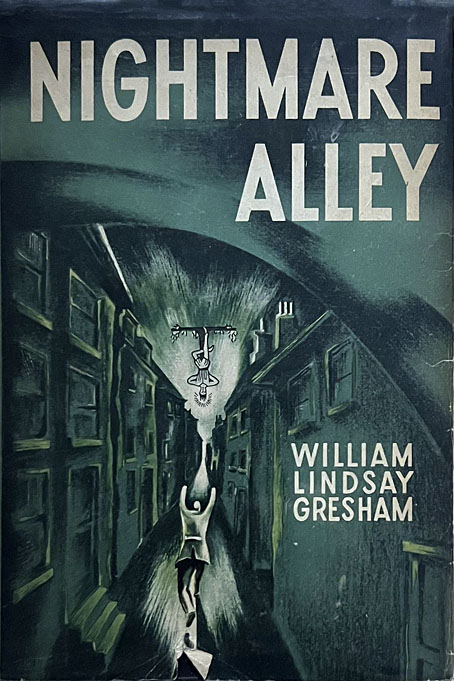
(5) FOCUS ON ANIMATION AWARD NOMINEES. “Online Film Critics Society Awards Nominated 5 Animated Features” reports Animation Magazine.
Nominations have been announced for the Online Film Critics Society Awards, which this year has put five films up for its animated feature category. Artful animated contenders also appear in other categories. Also of note, the VFX-fueled sci fi fantasy Dune: Part Two is the most-nominated project for this edition, with nine nods including Best Picture and Best Directing for Denis Villeneuve.
As awards season rolls on, the Best Animated Feature race holds no surprises for toon watchers. Up in the category are Gints Zilbalodis’ Golden Globe winner Flow, Pixar’s box office record smasher Inside Out 2, Oscar winner Adam Elliot’s Memoir of a Snail, Aardman’s charming Wallace & Gromit: Vengeance Most Fowl and the critically acclaimed DreamWorks feat The Wild Robot.
Outside the main toon race, The Wild Robot is nominated for Best Original Score (composer: Kris Bowers), and Flow is up for Best Film Not in the English Language….
(6) A HISTORY OF RESENTMENT. “Oscar buzz and genre snubs: will the Academy finally give sci-fi, fantasy and horror their due?” asks the Guardian.
Ah, the Oscars. That perennial exercise in Hollywood patting itself on the back with all the subtlety of a fireworks display, while the rest of us squint at our screens and wonder how many of these movies we’ve actually seen.
At least two years ago there was something for genre fans to crow about: Everything Everywhere All at Once drove all before it, making and resurrecting careers while smartly satirising Marvel’s multiverse saga before the latter even had the chance to collapse under the weight of its own convoluted timelines.
And those of us of an older vintage will always have 2004, when The Lord of the Rings: The Return of the King stormed the Oscars like a hobbit on second breakfast, sweeping up 11 statuettes and proving that a fantasy epic, when executed with enough heart, grandeur and bloody-minded ambition, could leave the Academy no choice but to hand over every prize in sight.
At other times it’s been easy to despair at the Academy’s unwillingness to reward fantasy fare. Genre films often dominate the technical gongs but struggle to crack the “prestige” barriers of best picture, director or acting nominations. Animated films, no matter how innovative, rarely break out of their category. The remarkable Spider-Man: Into the Spider-Verse, for example, won best animated film in 2019 but didn’t get a nod in any of the more celebrated categories…
(7) LIFE-CHANGING BOOKS. Shelf Awareness brings us “Reading with… Samantha Sotto Yambao”.
Book you’re an evangelist for:
Flowers for Algernon by Daniel Keyes. It’s required reading before departing this planet. Completely and utterly depressing, but also beautiful and beyond perfection. And did I mention that it was depressing?
Book you hid from your parents:
The Sleeping Beauty series by Anne Rice. Explaining how this was not the Disney fairytale version would have been very awkward.
Book that changed your life:
I’m sorry, but I’m going to have to break the rules and choose two books. The Belgariad series by David Eddings (I know, I know. It’s a series, not a book. I’m a rebel.) and The Time Traveler’s Wife by Audrey Niffenegger.
Minutes into a date that wasn’t a date, my now husband of 25 years and I geeked out over The Belgariad and our love for Aunt Pol’s bacon and realized that we had met our person. So yeah, I’d say The Belgariad pretty much set the course of my life from that night forward.
The Time Traveler’s Wife, meanwhile, gave me the worst book hangover. I felt so bad about Henry’s death that I swore if I ever wrote a book, my main character would never die. And so I did. And it became my debut novel, Before Ever After.
(8) MEMORY LANE.
[Written by Cat Eldridge.]
January 20, 1959 — One Step Beyond series
Sixty-six years ago this evening, a new genre anthology series called Alcoa Presents: One Step Beyond first aired on ABC where it would run for three years. (If you saw it in syndication, it was called just One Step Beyond.) It was created by Merwin Gerard who previously had done nothing at all of a genre nature. He was associate producer here with it actually being produced by Collier Young.
Unlike other anthology programs of the time, this series was presented in the form of docudramas. Mind you, the stories depicted hewed close to known urban legends or were remakes of let’s call them horror films on the light side. Ninety-six half-hour episodes would be filmed during its run. When it was cancelled, it was replaced by The Next Step Beyond which ran for one season of twenty-five episodes, fourteen of which were remakes of the first series.
John Newland, the original series host, and Gerard were involved in an attempt in the late Seventies to revive it. It failed miserably lasting but twenty-five episodes. As Newland stated later, “The remakes were a bad idea, we thought we could fool the audience, and we soon learned we couldn’t.”
They are legally available on YouTube now so you can see the first episode, “The Bride Possessed” here if you desire.
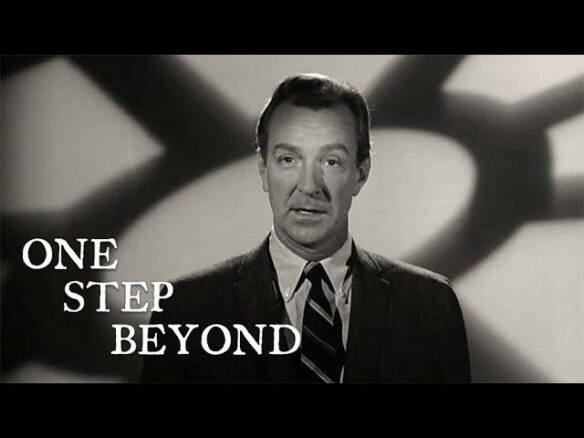
(9) TODAY’S BIRTHDAY.
[Written by Paul Weimer.]
January 20, 1934 — Tom Baker, 91.
By Paul Weimer: My first Doctor Who, and still the person I first bring to mind when I hear the phrase. It was PBS in the late 70’s, maybe 1980. I was starting to read science fiction, as I have detailed elsewhere. I was watching Cosmos, as I have also detailed elsewhere. And then there was Doctor Who to help seal me into the world of SFF. This was the time when Doctor Who came across the pond, and they started with the Tom Baker Doctor Who episodes. (They would eventually get them all, but they started with the fourth and then went back to the 1st and ran forward)
So, thus, Tom Baker became my first Doctor. The first Doctor Who episode I remember, and what hooked me from the get-go, was “Pyramid of Mars”. You know the one, especially since it’s recently relevant. Sutekh the Destroyer seeks to escape his Martian prison. The Doctor and Sarah Jane have to do their best with strange logic puzzles, dangerous robot mummies, and of course Sutekh himself, a being powerful enough to enslave the Doctor with his will and mind. It was a bit of science fantasy mythology, and I was hooked immediately. (And imagine my surprise when Sutekh returned in the current series. What an unexpected call back!). I eventually did get to see his entire oeuvre, from “Robot” to “Logopolis”, and his run taught me the Doctor could have modes and moods within a Doctor’s run, something not always picked up in the current incarnation of Doctor Who. The Fourth Doctor has a definite, swinging character arc that Baker brought to the role.
Besides “Pyramids of Mars”, my favorite Baker Doctor Who episode is probably “City of Death”, with a twisty plot, and perhaps the best second Romana-Doctor chemistry. I could believe why the two actors briefly married, because the second Romana and Baker’s Doctor feel like a comfortable married couple in love’s bloom and flourish, in “The City of Lights”. Although I admit the Doctor being rooked in “The Invasion of Time” and not seeing the Sontaran gambit was pretty good–it showed the Doctor could be, however briefly, outfoxed.
Tom Baker, as it turned out, wound up being more than (by some measurements) the longest running Doctor in Doctor Who. (And if the Curator is a future incarnation of the Doctor, only one of two actors to play two incarnations of the Doctor.) He had a fantastic small role in the terrible 2000 Dungeons and Dragons movie, playing an elderly elf cleric with a twinkle in his eye. He’s the narrator of Enemy Mine (previously discussed on a previous scroll) as well as doing other voice work as well in video games and elsewhere. He’s also the evil magician in the Golden Voyage of Sinbad.
Happy Ninety-first Birthday!

(10) COMICS SECTION.
- Rubes illustrates how prophecies can be misunderstood
- Thatababy tries to preserve the work.
- Waynovision struggles with large numbers of followers.
- Wizard of Id works magic with leftovers.
- Brewster Rockit learns the secret invasion plan.
(11) WHAT MIGHT HAVE BEEN. “Skeleton Crew’s Finale Almost Had a Jedi Flashback”. Gizmodo says, “Had things gone differently, Star Wars: Skeleton Crew would’ve featured a new Jedi that played a pivotal role in Jod Nawood’s development.”
The recent finale for Star Wars: Skeleton Crew finally shed some light on Jude Law’s mysterious Force user, Jod Na Nawood. Growing up as a poor kid, he was taken in by a Jedi and trained in the ways of the Force. He’s been on the run ever since he watched her die, and it turns out we would’ve met her during the sequence.
On Instagram, actor Yasmine Al Massri (who you’ve heard as Morana on Castlevania) posted photos of herself as Jod’s master, Jedi robes and doing some brief lightsaber training that would’ve presumably been her putting up a fight before her death….
(12) ANDOR BUDGET. “Star Wars: Disney Reveals the Record-Breaking Budget for the Andor Series” – Belles and Gals recites the figures.
…When it comes to expanding the Star Wars saga, Disney has not held back. The Andor series, a prequel to the acclaimed film Rogue One, has reportedly been produced with a colossal budget of $645 million for its first two seasons. This investment covers a total of 24 episodes, bringing the average cost per episode to nearly $27 million. This figure places Andor as the most expensive Star Wars series ever produced by Disney+, surpassing previous projects in both scale and financial commitment.
Tony Gilroy, the creator of Andor, expressed his enthusiasm about the series’ future prospects. “The substantial investment underscores Disney’s commitment to delivering high-quality storytelling within the Star Wars universe,” he stated. This dedication is evident in the intricate production values and compelling narratives that Andor promises to offer its audience….
(13) PAUL & PAL. [Item by Cat Eldridge.] “Dune: Part Two – Paul Atreides (Ultimate Bonus) 1/3 Scale Statue” at the Spec Fiction Shop goes for the special price of — $1,935. But wait, there’s more! Check out the desert mouse which looks suspiciously like a rabbit


(14) TODAY’S THING TO WORRY ABOUT. Phys.org is “Turning the Hubble tension into a crisis: New measurement confirms universe is expanding too fast for current models”.
The universe really seems to be expanding fast. Too fast, even. A new measurement confirms what previous—and highly debated—results had shown: The universe is expanding faster than predicted by theoretical models, and faster than can be explained by our current understanding of physics.
This discrepancy between model and data became known as the Hubble tension. Now, results published in The Astrophysical Journal Letters provide even stronger support for the faster rate of expansion….
…Measuring the universe requires a cosmic ladder, which is a succession of methods used to measure the distances to celestial objects, with each method, or “rung,” relying on the previous for calibration.
The ladder used by Scolnic was created by a separate team using data from the Dark Energy Spectroscopic Instrument (DESI), which is observing more than 100,000 galaxies every night from its vantage point at the Kitt Peak National Observatory.
Scolnic recognized that this ladder could be anchored closer to Earth with a more precise distance to the Coma Cluster, one of the galaxy clusters nearest to us.
“The DESI collaboration did the really hard part, their ladder was missing the first rung,” said Scolnic. “I knew how to get it, and I knew that that would give us one of the most precise measurements of the Hubble constant we could get, so when their paper came out, I dropped absolutely everything and worked on this non-stop.”
To get a precise distance to the Coma cluster, Scolnic and his collaborators used the light curves from 12 Type Ia supernovae within the cluster. Just like candles lighting a dark path, Type Ia supernovae have a predictable luminosity that correlates to their distance, making them reliable objects for distance calculations.
The team arrived at a distance of about 320 million light-years, nearly in the center of the range of distances reported across 40 years of previous studies—a reassuring sign of its accuracy.
“This measurement isn’t biased by how we think the Hubble tension story will end,” said Scolnic. “This cluster is in our backyard, it has been measured long before anyone knew how important it was going to be.”…
(15) EARLY SPECIAL EFFECTS LORE. Superheroes “flying” suspended from wires is just one of the “Early TV and Movie Superhero Special Effects” revealed by TVCrazyman.
[Thanks to Kathy Sullivan, Teddy Harvia, Mike Kennedy, Paul Weimer, Mark Roth-Whitworth, Andrew Porter, John King Tarpinian, Chris Barkley, Cat Eldridge, SF Concatenation’s Jonathan Cowie, and Steven French for some of these stories. Title credit belongs to File 770 contributing editor of the day Mark Roth-Whitworth.]

